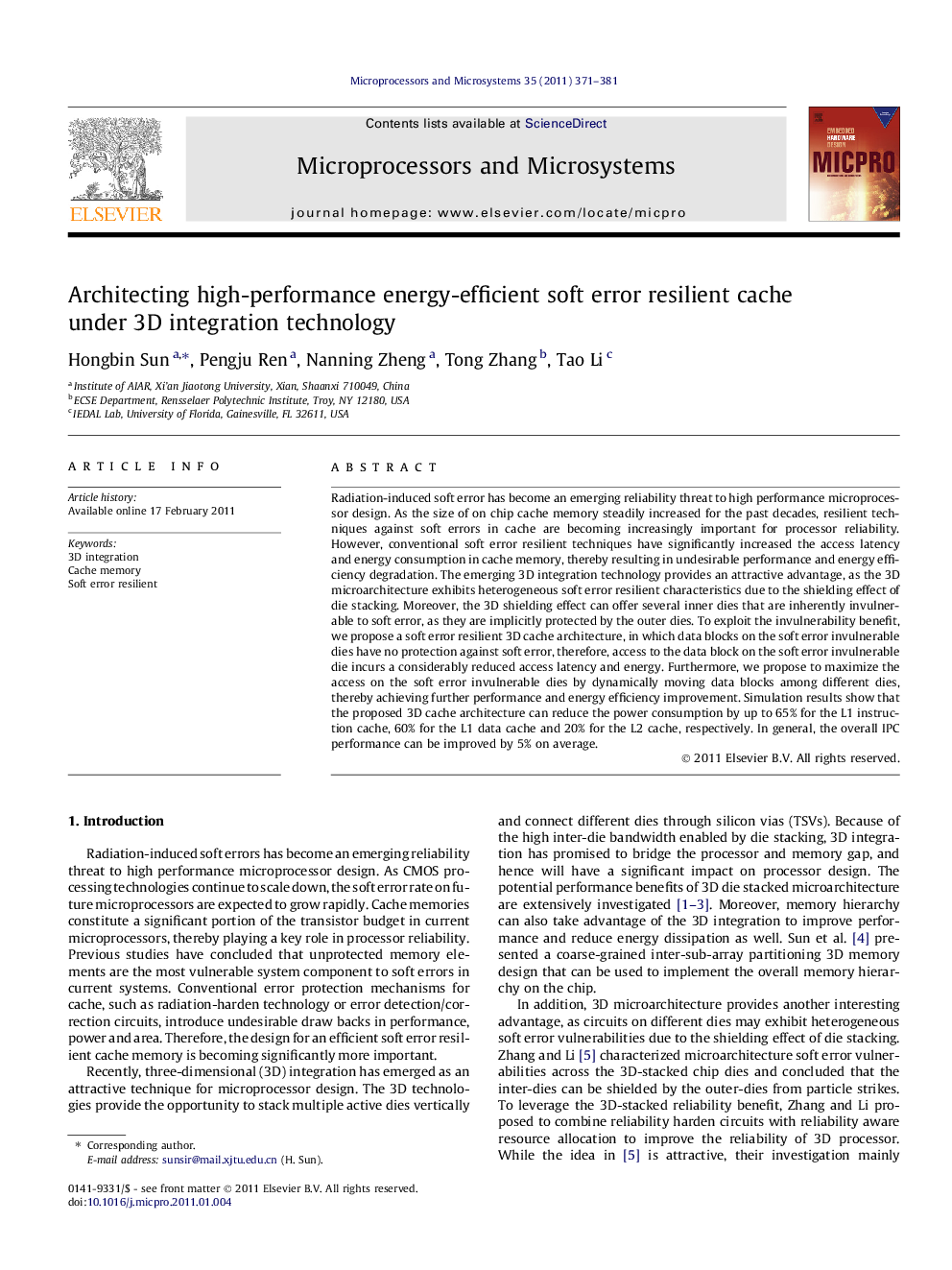| کد مقاله | کد نشریه | سال انتشار | مقاله انگلیسی | نسخه تمام متن |
|---|---|---|---|---|
| 461625 | 696620 | 2011 | 11 صفحه PDF | دانلود رایگان |

Radiation-induced soft error has become an emerging reliability threat to high performance microprocessor design. As the size of on chip cache memory steadily increased for the past decades, resilient techniques against soft errors in cache are becoming increasingly important for processor reliability. However, conventional soft error resilient techniques have significantly increased the access latency and energy consumption in cache memory, thereby resulting in undesirable performance and energy efficiency degradation. The emerging 3D integration technology provides an attractive advantage, as the 3D microarchitecture exhibits heterogeneous soft error resilient characteristics due to the shielding effect of die stacking. Moreover, the 3D shielding effect can offer several inner dies that are inherently invulnerable to soft error, as they are implicitly protected by the outer dies. To exploit the invulnerability benefit, we propose a soft error resilient 3D cache architecture, in which data blocks on the soft error invulnerable dies have no protection against soft error, therefore, access to the data block on the soft error invulnerable die incurs a considerably reduced access latency and energy. Furthermore, we propose to maximize the access on the soft error invulnerable dies by dynamically moving data blocks among different dies, thereby achieving further performance and energy efficiency improvement. Simulation results show that the proposed 3D cache architecture can reduce the power consumption by up to 65% for the L1 instruction cache, 60% for the L1 data cache and 20% for the L2 cache, respectively. In general, the overall IPC performance can be improved by 5% on average.
Journal: Microprocessors and Microsystems - Volume 35, Issue 4, June 2011, Pages 371–381